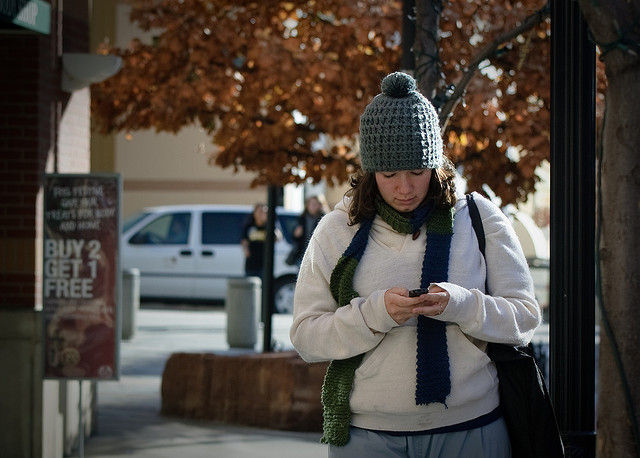
‘Keep your eyes on the sidewalk and your hands off the phone’ may become the slogan of safety campaigns of the near future.
Between 2004 and 2010, emergency room visits for injuries involving distracted pedestrians using cellphones doubled, according to a 2013 study. Yet, in a new survey, few American pedestrians said they were the source of the problem. Instead, those surveyed suggested the blame mostly falls on the sidetracked, sidewalk-dwellers around them.
It’s not a problem caused by “others,” Alan Hilibrand an orthopedic surgeon, survey coauthor, and spokesperson for the American Academy of Orthopaedic Surgeons (AAOS), told Ars. “It’s really all of us.”
The survey, conducted by the AAOS, included a little more than 2,000 adults, 78 percent of whom said that distracted walking was a serious issue—for others, at least. While 74 percent of people said that other people were sometimes or always distracted while walking, only 29 percent said that they themselves fit into those categories. Still, 26 percent of people admitted that they had been involved in a distracted walking incident, which included everything from bumping into things to falling and breaking bones.
The participants continued to shrug off blame when the survey asked more detailed questions. Though 90 percent of people said they always or sometimes saw others talking on the phone while walking, only 37 percent said that they also do that. Eighty-five percent of people said other people were distracted by using their smartphone to text, e-mail, or play games while walking, but only 28 percent said that they use smartphones that way while walking.
Hilibrand said that the AAOS hopes to raise awareness of the problem, much like previous campaigns about distracted driving. However, he warned fighting distracted walking might pose much more of a challenge.
There are many gradations of distracted walking, he explained. These range from talking to someone you’re walking with you, to listening to music but keeping your eyes on your path, to totally focusing on a phone while composing an e-mail message or checking a map. It’s hard to draw a line of what’s too distracted to walk. And, Hilibrand adds, it’s impossible to have walking rules akin to the laws against texting while driving. While the two problems are similar, distracted walking is more complicated, he said. "It's not a black and white issue."
reader comments
132